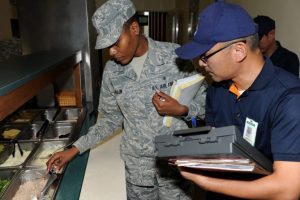The swimming pool program is concerned with the overall safety and health of bathers as it relates to the operation of the facility. This includes assurance of water quality, maintenance of filtration and circulation equipment, the presence of necessary safety equipment and warning signs, life guarding requirements, record-keeping, and overall facility operation.
Some requirements relative to the design of a pool or spa are dependent upon the date of construction. CCBH has created a Swimming Pool & Spa Rules Synopsis to provide operators with a quick reference guide to Ohio regulations. All operators are required to keep records of water quality testing results and accidents on a uniform Weekly Operation Report.
Keep in mind that when renewing a License to Operate a Swimming Pool, there is now a late fee for any application/fee postmarked after April 30th of each year.
Revised Rules – Effective April 1, 2011
According to Ohio Revised Code, the rules governing public pools, spas, and special-use pools must be reviewed at least every five years. The Ohio Department of Health (ODH) is responsible for organizing a committee to review and revise the rules as needed. The committee is comprised of individuals from the State and local health departments as well as industry members, professional & non-profit organizations. Although the committee is made up of a relatively small group of people, everyone in the state has a say in the rule changes. If a template is submitted to the committee, it will be reviewed and considered for acceptance.
The review process began at the end of 2008, and concluded in January 2011. The proposed changes were presented to, and passed by, the Public Health Council, now known as the Public Health Advisory Board, and Joint Committee on Agency Rule Review (JCARR). The proposed rules were written into Ohio Administrative Code with an effective date of April 1, 2011. Some of the more significant changes include:
- Implementing a combined chlorine maximum of 1.0 ppm
- Removing the TDS upper limit of 3,000 ppm to allow for salt generating disinfection systems
- Lowering the cyanuric acid upper limit to 70 ppm
- Adding “vomiting” and “diarrhea” to the list of symptoms in which operators can exclude individuals from the pool/spa area
- A flow switch will be required to be installed on all auto controllers
- A technician will be required to service auto controllers if the operator cannot
- The first water chemistry test of the day will be required to be taken poolside
- The lifeguard chart was revised and now will require the operator of a pool larger than 6,000 square feet to provide a written plan for coverage
- Clarification on lifeguarding requirements for slide landing areas
- For pools not required to be guarded, signage must be present indicating that children must be supervised and not to swim alone
- Spray grounds are now licensed and will be inspected just like any other pool
- VGB Act adopted into the pool rules
- Cell phones are permitted to be used as an emergency phone provided it is the property of the pool manager and is plugged in at all times
- A list of “critical violations” was created and should be referred to when documenting violations on inspection reports
Please click on the following links for a summarized version of the revised rules:
- Summary of Updated Rules
- Summary of Updated Rules for Operators
- Summary of Spray Ground Regulations
- Synopsis of Rules
Contact Information
Tom Fink, R.S.
Supervisor
216-201-2000 ext 1226
tfink@ccbh.net
Ashley Ruminski, RS
Program Manager
216-201-2000 ext 1225
aruminski@ccbh.net



